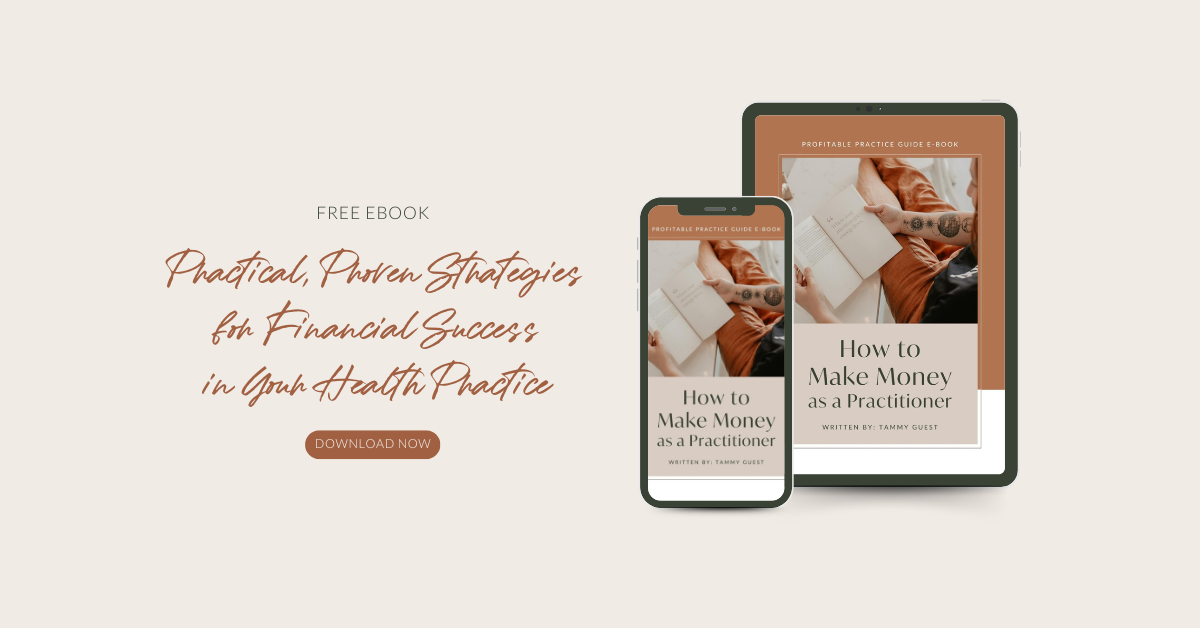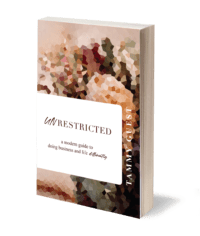Lately, there have been a lot of questions about Acute Consults. This is a topic that will be covered by an in-depth workshop at NatEx 2019 at the Gold Coast, but I thought I’d go ahead and do an introduction into Acute Consults now to answer some of your questions.
3 Different Types
True Acute Consult
There are actually three different varieties. There is a true Acute Consult where you are trying to identify a condition in a short period of time, between two to 20 minutes. These are usually done kind of over the counter – it’s very rarely done in a closed room – it’s truly acute. It happens during a short period of time and it happens for an acute style symptomology.
Bigger conditions, things that have polypharmacy and other things, and places and spaces where those things are generally looked after are in a full initial consult. There’s a reason for that because we want to get to the root cause of what’s going on. To do that, we need to take a comprehensive case to understand what’s going on.
But for things like sniffles or random tummy aches where you can instantly think about something that could be beneficial in that moment, that’s the type of thing we’re talking about an Acute Consult.
Mini-Consult
There’s a second type of Acute Consult which is like a bonus for one of your programs. This is like a mini consult. You can take the same nine steps you would use in any mini consult, but you have to put it in the context of your program. Programs are usually a series of consultations or an online component of teaching where you could possibly prescribe practitioner-only products.
If it is a mini consult where you are only doing it so that you can give them a decent detox powder or something like that, then you would use the same checklist as usual. But, you also need to look at a deeper aspect of what’s going on for them. There is a possibility that you might want to offer them an initial consult, as well. But you can still cover these nine points even if you’re doing a mini consult.
Discovery Call
The third one is a discovery call. This is a very different thing. It’s got a very different intention than an Acute Consult. I’ve done some training on this before and may do more again later.
The Consult
Set Expectations
What I’ve just done by explaining to you what an Acute Consult is, is the first step of these nine steps. I set our expectations, intentions, and agreements.
This is how you start an Acute Consult. You tell the person exactly how much time you have so it’s very clear from the beginning what’s expected to happen within that period of time.
This is easy for you as a practitioner to skip over because you think you’re being kind. We’ve done a lot of research on our profession and the vast majority of practitioners have empathy as one of your biggest strengths. When we over dial empathy, sometimes we go into a give, give, give mode which can actually be overwhelming. It creates really busy boundaries between you and your potential client.
It also creates a level of unkindness. This is a beautiful concept and I loved the way that Brené Brown said it in her new book, Dare to Lead. She says clarity is kind. Being unclear is being unkind. So you want to get really clear and set up your expectations and communications very clearly. Explain that this is an Acute Consult, it’s going to take about 20 minutes, it’s going to cost them whatever it happens to be, and within that time you’re going to get to the bottom of this acute situation that they’ve got going on. You’re going to be able to prescribe them something for it which might be lifestyle, or some tips and tricks, or it might be some herbal medicine, vitamins or mineral supplements, or it might be dietary.
See how that took possibly less than 20 seconds to say? But you set up an expectation that if it has to go deeper, they may need to come in for an Initial Consult. This is your opportunity to share your availability.
It’s very clear from the beginning and that’s really kind. It’s really kind to be able to give somebody those boundaries and be really clear with it. It’s really unkind if you allow them to ramble on and tell their entire story when you don’t have time for that.
An Acute Consult is generally short, sharp, sweet – that kind of thing. It takes a little bit of practice to get good at setting up expectations and being clear with your communication but once you are clear, everybody can feel more safe and more at ease.
So that is Step Zero, set up your expectations, be very clear with your agreement and clarity is a kindness. Be really clear about what they can expect out of the conversation and if the issue is more complex than you initially thought, then you suggest that they come in for an Initial Consult.
Acute Consults can happen with your follow-up clients as well. It’s particularly good for winter, for hay fever season, really good for people coming back from travelling – where you can instantly think of something that could help them.
Record Everything
Next, you need to record everything. An Acute Consult is not just some random conversation that you happened to have. It is a consult that needs to be recorded, especially if you are giving them some form of supplement or tonic. Any remedy has the possibility of something going wrong.
This should be sticking in your mind when you’re thinking about an Acute Consult. A worst-case scenario – irrelevant of you or them or the information shared – is that anything you prescribe has the possibility of being recalled. A recall happens for all sorts of different products and reasons. But if a recall happens and you can’t get in contact with that person then that is a level of duty of care that you haven’t taken. It’s a level of negligence that you have to take responsibility for. So it’s really important that when you’re doing Acute Consults that you’re actually taking down this information and keeping it on record for seven years. This is why I really love online systems to look after your customers because you can literally be there and have your questions ready to go, get them all sorted and they’re off.
This can be as short as two minutes. I’ve seen it happen in a lot of apothecaries. It can be really super quick and tempting to just give them something quickly and move on. But there is always a potential of something causing a problem in the future.
9 Steps To Running Successful Acute Consults
1 – Identity
It’s really important that you take their full name, not just “Bob” or initials – their actual name.
The other part that you have to take down is their date of birth. Because it could be Bob Smith who is a three-year-old or Bob Smith who is 60. Get their full name and date of birth so that you have an actual identity as based on exactly who they are.
2 – Contact Details
You have to find some form of contact details. Have you ever been on an aircraft and on there’s a special form you have to fill out when you come back in the country because if everybody on the plane gets sick they have to be able to contact you? A primary form of contact might be a phone number or their address or it might be their email address.
In any case, it needs to be an emergency-style form of contact so that if anything was to go adverse reaction wise, you need to be able to contact them.
3 – Allergies
What is one of the first things you get asked before you are given anything in a hospital? Those of you who carry epi-pens around might have the answer to this. Number Four – the fourth most important thing that you need to record and ask about is their allergies. I’ve had clients before that have allergies to lavender, to honey or anything honey-based. There is a plethora of allergies out there and they are getting more common.
An allergy is a very specific immediate concern when you are giving an Acute Consult to somebody so record any allergies they have and be specific. You have to ask specifically for these types of things. If they have a really serious allergy or complex allergies, doing a full Initial Consultation would probably be better.
4- Red Flags
Next is asking about any red flags.
Some of you may not have come across the term red flags before. This was something we talked about in my training. Red flags are growing.
A red flag means to “stop.” It’s a sign and a signal for you to stop and think. Really take a moment and wonder about any precautions that you need to take, either through the conversation that you have, through the prescription that you make, or whether or not you need to create a further consult with this person.
Some of the red flags that really stand out are:
- pregnancy
- breastfeeding
- medical conditions (hypertension, diabetes, cancer, etc.)
- age-related (contraceptive medications, perimenopausal hormone replacements, etc.)
- Etc.
These are red flags that are instantly going to give you a precautionary kind of scenario. Through the conversation, whether it’s 2 or 20 minutes, these are the things that you really have to focus and drill down on first. Then you can continue on with your general diagnostic questions. But these ones are the very specific ones that you need to cover every single time you do an Acute Consult.
5 – Medications
The next one when it comes to red flags is medications, but that’s number six all by itself.
What medications is this particular person taking now, whether consistently or they have taken acutely for this particular condition? This is a really important question and will come up time and time again throughout the Acute Consultation. You have to ask more than once because if you are getting really speedy with these questions, it’s very easy for somebody to leave out that they happen to be on a medication. They might even be thinking that you might not agree with this particular type of medication, so they just won’t let you know.
So it’s really, really important. During a full initial consultation, it’s much more likely that you’ll be able to tease that information out. But in a short Acute Consultation, you have to be very direct with these questions so that you don’t have any adverse reactions.
For example, my first (and only) proper H4C complaint was a client who omitted that she was on Roaccutane which is a pretty meaty medication that doesn’t work well with vitamin A and causes liver problems if you have vitamin A concurrently with Roaccutane.
So you have to be very specific about asking what medications they are on. Ask them very specifically and that first comes up in that in the Number Four Red Flags section, but then you have to really drill down in Number Five the Medication section because they might just leave it out. There might be all sorts of reasons they aren’t telling you that but when you’re talking about handing over something acutely and you’re specifically there to provide a tailor-made very individual solution for them, you’ve got to really notice which medications and drill down on which medications they have.
6 – Ingredients
By the time you’ve gotten to number five, you may realise that you’re actually qualifying them along the way as to whether or not an Acute Consultation is the best thing for them. If it’s not, you have to be really brave because it’s your duty of care to tell them what is truly beneficial for them. It has nothing to do with money, it’s about proper health care. If these things become too complex, if the polypharmacy is complex and you need to look up interactions and things like that, or you need to take a deeper dive or you need to get some feedback, you have a duty of care to actually offer them an Initial Consult and give them an idea about when your next Initial Consult is, because you’d like to do some more research.
After number five, though, then you can start to ask those relatively easy questions about their particular problem today. They’ve probably already told you and that’s why you’re running an Acute Consult with them. Then, you’re asking the clinical case taking questions that you have been taught about through pathophysiology anatomy, physiology, case taking, that kind of thing.
The top questions are:
- What is it?
- How long have you had it?
- Is it persistent?
- Is it ongoing?
- Is it intermittent?
- Is it’s slowing and stopping down?
- What’s it better for?
- What’s it worse for?
- What have you tried?
- What haven’t you tried?
- What’s working?
- What’s not working?
You may have to remind them that you’re in an Acute Consultation and that you’ve got to get these really good pieces of information that your body is telling, and then you’ll be able to give them something to help relieve it. So focus on what it feels like rather than the story of how it happened and where it came from and how it’s happened in the past as a child – all those things are really beneficial in a full consultation but in an Acute Consultation, we’re reminding them that we’re helping their body right now.
Once you’ve asked your proper case taking questions, then you determine what will help. Because you’ve been really careful about what’s going on with them you know that you need to double-check the ingredients and whether or not their answers to questions 1 through 5 match with the ingredients that you’ve thought of in your head.
So you might say, “I’m thinking about giving you elderberry and echinacea, it’s a tincture, it tastes nice.” By verbally describing the ingredients and giving an explanation, it empowers your patient. Being able to empower them with information about their own health is one of the best things that we can do as a practitioner.
And, there’s a secondary reason for this. If you’re explaining to them an ingredient that they’ve forgotten to tell you they are allergic to, they will probably remember they had a reaction to it in the past and will mention it at this point. Or some other reason why they don’t want to have a particular ingredient.
So number six is verbally explaining the ingredients of what you are prescribing.
7 – Contraindications
Number seven is checking on any contraindications. So what you do is go back up to number one, check your prescription against everything you’ve found out about them so far:
- Age – is there any contraindication between their age and the prescription?
- Allergies – any contraindications there?
- Red Flags – anything that conflicts?
- Medications – do you see any contraindications?
- Double check everything you’ve talked about against your prescription
It’s actually really empowering for your patient to see you double checking. It lets them know that you are looking after them. Don’t think you are supposed to know everything.
Even bringing over the book and showing them that it’s okay breast-feeding, not for pregnancy, for instance.
So you’ve got your contraindications checked, and then we move onto number eight.
8 – Your Contact Info
Just as you need to be able to contact them, they need to contact you if they have questions or issues. A lot of us have stickers on our products. You can get stickers or labels that you can put your details on the bottom of. If you don’t have these on the products that you’ve given the person, then definitely give them a printout of the prescription.
Simple Clinic (and possibly Clinico) has a way of just sending out the prescription straight away and if you’ve filled out that prescription properly then you’ll have your contact details on there and you’ll have very specific obvious things signs and symptoms that you already looked at.
9 – Keep It Short
I’ve done this exact same thing – steps 1 to 9 – in less than five minutes before, in a health-food kind of setting, at expos, and in corporate settings. It can definitely be done in less than five minutes but making sure that these are all covered is doing a duty of care for not only your client but you as well. Making sure that you’ve ticked all the boxes to know that you’ve actually given them the right care to as much of a degree as you possibly can.
The maximum amount of time you should spend on an Acute Consult – and this is for really blown out of proportion – is 30 minutes. But 20 minutes should normally be the absolute most amount of time you should spend.
The type of people you will see for Acute Consultations are the type who may visit Dr. Google or who might go to the health food shop or their local pharmacist and ask a question. But because we know what we know, because we have access to all of these herbs and vitamins, and we’re consistently keeping on top of the information with our CPE and learning about contraindications, we can give those little tidbits of lifestyle medicine. Having an acute consultation is going to be so much more beneficial because we will catch those things like the Reaccutane and vitamin A contraindication, whereas they might get missed in the situation of Dr. Google. They might get messed even in talking to a pharmacist because they’re after a quick fix.
Share This
Hopefully this has been beneficial to you. If you think it would be beneficial for somebody else, please share it! You can either tag them in the Hub or if you happen to be seeing this on Youtube or on the Tammy Guest guest blog, please feel free to share it, because we want everybody in our profession to benefit from this type of information. Then we get the follow-on effect of all of the people that we help benefiting from professional advice that’s individualised for them.
Free Resources
Thinking about taking your business online? Make sure you have all the essentials you need to successfully transition to online consults and a virtual practice covered with my How To Pivot Online Checklist.









Leave A Comment